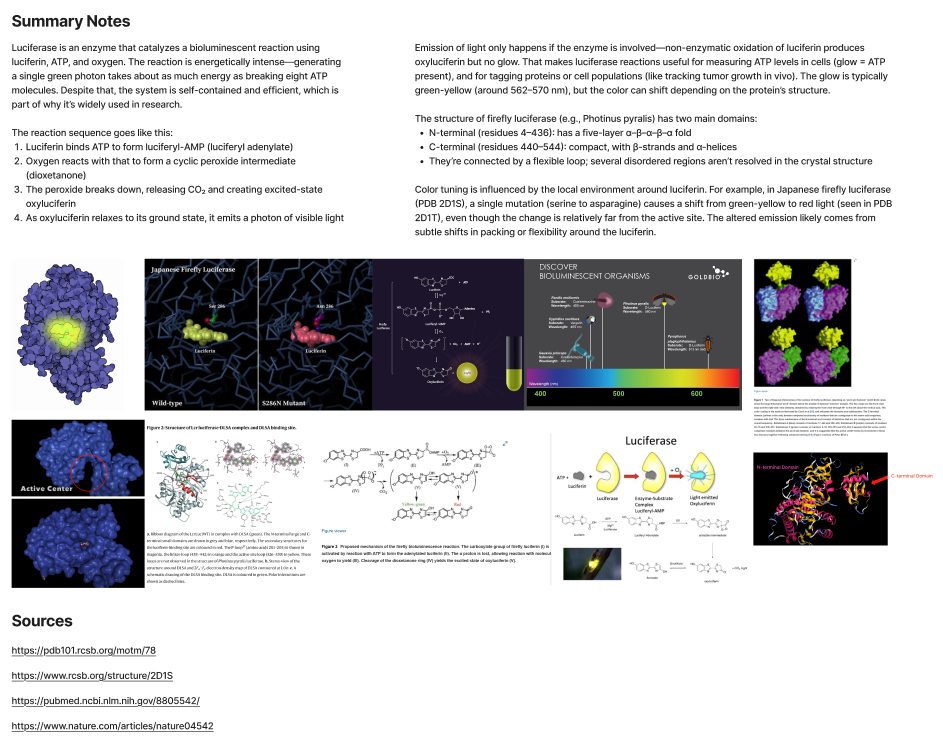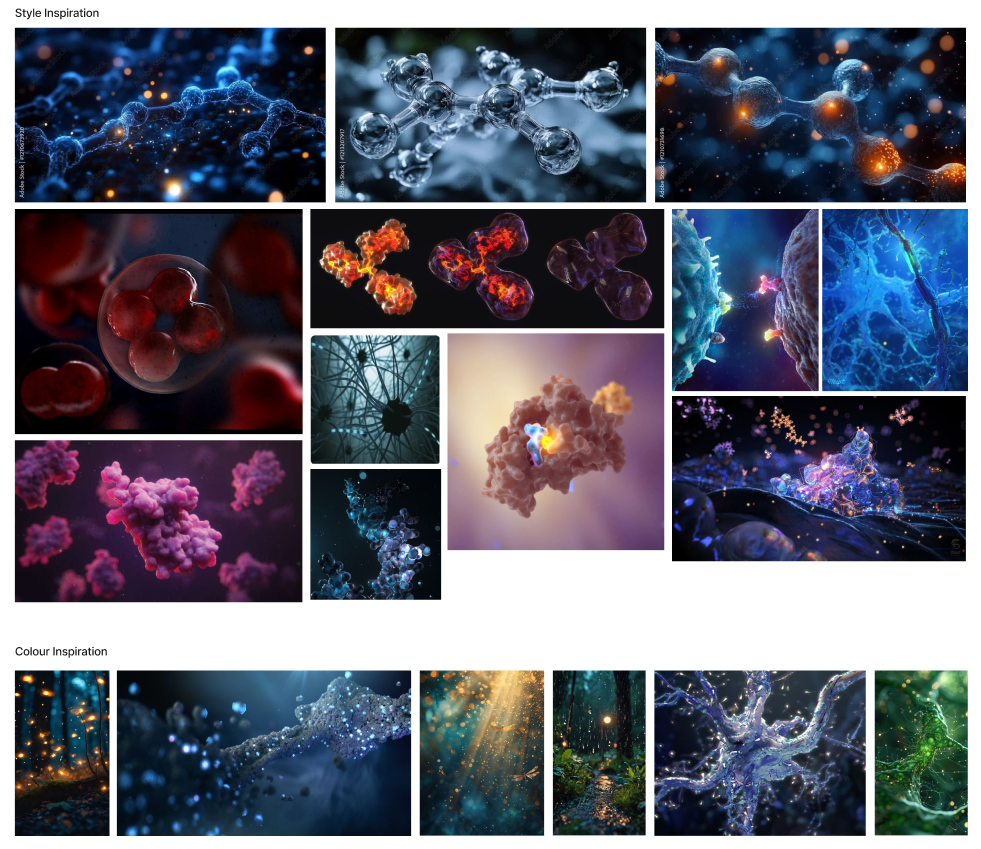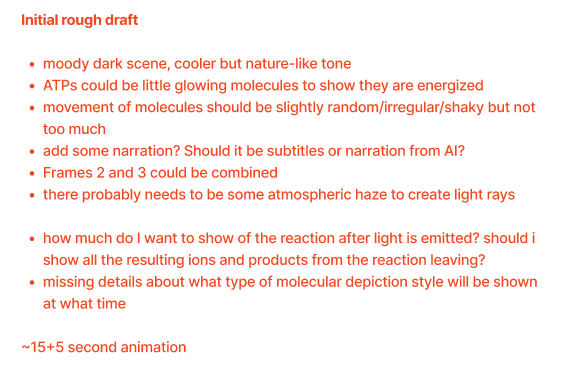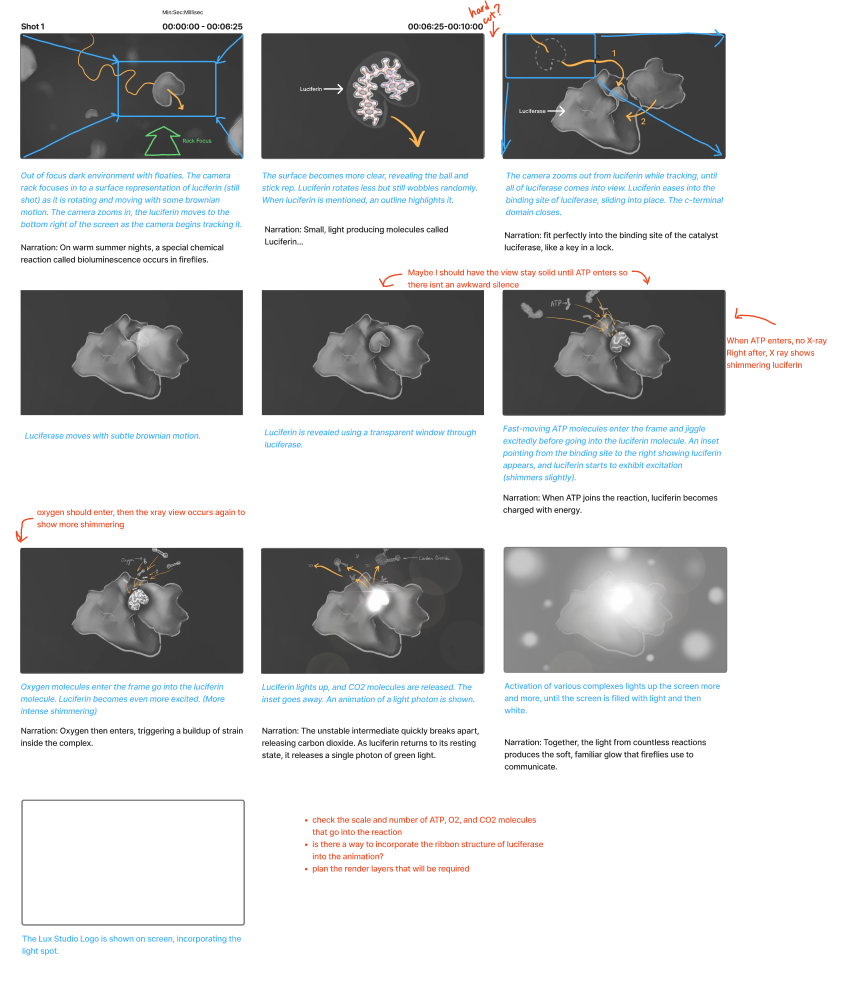Firefly Luciferase
A short animation on firefly bioluminescence
The firefly luciferase reaction is a striking example of how biology transforms chemical energy into visible light. This brief animation highlights the core steps of the process without going too deep into biochemical detail. It begins with luciferin binding in the luciferase enzyme’s active site, followed by ATP helping to form luciferyl adenylate. Oxygen then reacts with this intermediate to create a strained dioxetanone ring, which rapidly breaks apart—releasing carbon dioxide and producing an excited form of oxyluciferin. As oxyluciferin returns to its ground state, it emits a photon of green light, using energy roughly equivalent to breaking eight ATP molecules.
This simplified look at the mechanism emphasizes the elegance and efficiency of the system. Because the reaction only needs oxygen, ATP, and luciferin, it’s widely used in research to monitor ATP levels, track cancer cell growth, and tag proteins. Small changes to luciferase can shift the color of the emitted light, illustrating how even subtle structural differences can impact function.
Roles: Research, Sketching, Script Writing, Storyboarding, Animating, Compositing, Editing
Audience: General Audience
Clients: None
Communication Objective: Create an instructional guide using the least steps to show the suturing and surgeon’s knot process.
Medium: 3D Animation
Software: Blender, Procreate, After Effects
Research and Sketching
I created a large note sheet with my research on firefly luciferase, how the reaction occurs, why it is biochemically significant, and how the molecule undergoes conformational change during luciferin binding. I have summarized my findings here.
Moodboard
I wanted to capture a moodier, dark and cool-toned style for this animation to add visual interest and draw parallels to the way fireflies twinkle in the forest.
Script and Storyboard
—-
Animatic
Coming soon!







